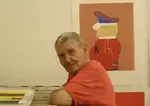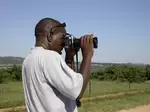Willem Boshoff
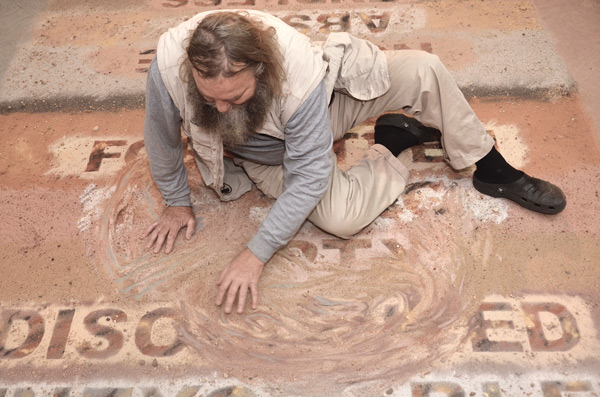
Willem Boshoff is a Johannesburg based artist who has lectured and taught at many of South Africa's leading tertiary institutions. When he first arrived to work at the studio he was accompanied by a trailer. In the trailer was a large computer, which turned out to be critical to his working on the Oh No! Prints.
Much of his time at the studio was spent wandering around the garden, camera in hand. Boshoff is the ideal visitor to one's garden with his encyclopedic botanical knowledge. A Brazilian Pepper Tree was identified (it has since been turned into firewood) and the incredible ficus sansibarica (Zanzibar Fig) on our dam wall now has a name full of associations. It is remarkably easy to go off on tangents with Willem Boshoff. A casual reference to keys results in an analysis of the name for someone who keeps keys, a claviger, and then leads to someone who is obsessed with keys, and the conversation ends up in heaps of laughter.
Lost in dark I and II
Lost in dark I and II are the first prints made at The Artists’ Press that incorporate sandblasting, a technique that connects the prints with the sand-based work that Boshoff has done. When one is lost in the dark, things are not clear, text and directions become difficult to read and decipher. Panic sets in.
Lost in dark I and II are based on an earlier work of Boshoff’s titled: BOOK OF SAND 2014 Medium: Various types of sand. Early test titles: Lost in the Book of Sand, When a tree falls in the desert ...
Seven words on page 1: NOWHERE, ABSENT, ENDLESS NAMELESS, FUTURELESS, UNSEEING, NONEXISTENT
Seven words on page 2: FORGOTTEN, NOTHING, EMPTY, DISORIENTED, INEXORABLE, IMPOSSIBLE, NEVERMORE
“Oliewenhuis Art Museum in Bloemfontein invited me to be part of their INQUISITIVE MIND exhibition in 2014. The exhibition aimed to pair fine artists with aspects of research and collections offered by the National Museum in the centre of Bloemfontein. In August I had the great delight to meet Ina Marais, librarian, curator and custodian of the museum’s historical book collection. Ina led me into a vault in the very centre of the museum complex, and in the vault, she opened a safe to show me their most valuable set of books dating from 1648 to 1655 – Toonneel des Aerdrijcx by Willem & Johannes Blaeu. Imagine, books of maps initiated before Jan van Riebeeck landed in the Cape.
The mystery surrounding these unusual books is partly brought about by the fact that no-one knows how they made their way to Bloemfontein. They simply seem to have appeared from nowhere. Astonishingly, a number of countries, like Prussia, so richly illustrated in the books, is no longer in existence. The thick paper and the hand coloured maps made a lasting impression on me and I wondered how I might respond to this unusual encounter.
I decided to ponder South Africa at the time when the rare book was made, a time when no maps yet charted its vast territories. I was drawn to the idea that without maps and today’s GPS one might always be uncertain of where one is. To be lost, especially in a desert, with no hope of others looking for one, must be one of the most terrifying human experiences. Because of this, I decided to make the impression of an open book on the ground in sandy materials, a substance as fugitive as our very existence – ‘dust to dust, ashes to ashes’.
I looked for words that might describe the experience of being lost in the desert. One might, for example, feel that one has no future and so the word ‘futureless’ was ‘written’ down in the sand. Because no-one might be looking for one, one might feel that one’s name and very existence would be forgotten, and so I selected the word ‘nameless’.
I also realised that this experience of being lost is not only applicable to a far-away desert. One can be lost in a crowd or at home, in fact, anywhere and at any time. I made a long list of words describing in some way to me the things that might mill around in a lost individual’s head and from this list I selected the fourteen words listed above." Willem Boshoff, 2016
New Editions
Artists A - L
Artists M - X
For orders (with free shipping) or any other enquiries, please contact us.
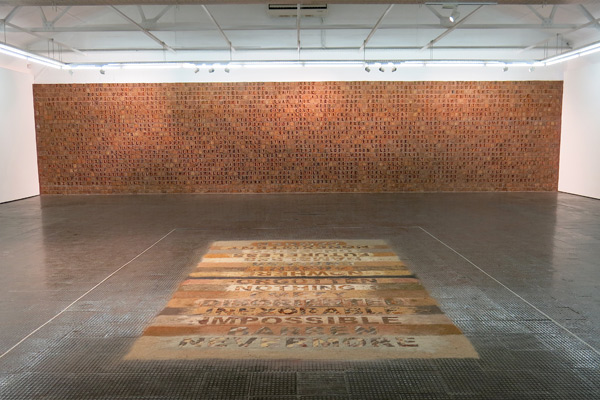
BOOK OF SAND installation, Cape Town
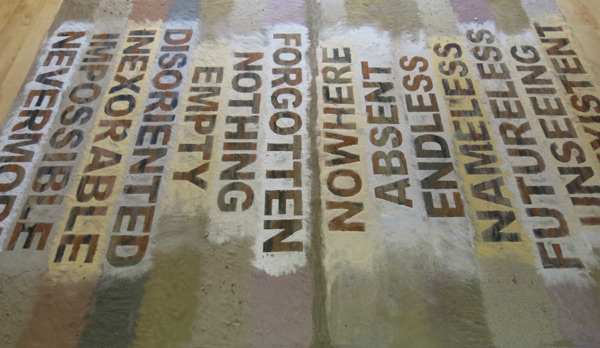
BOOK OF SAND installation, Bloemfontein
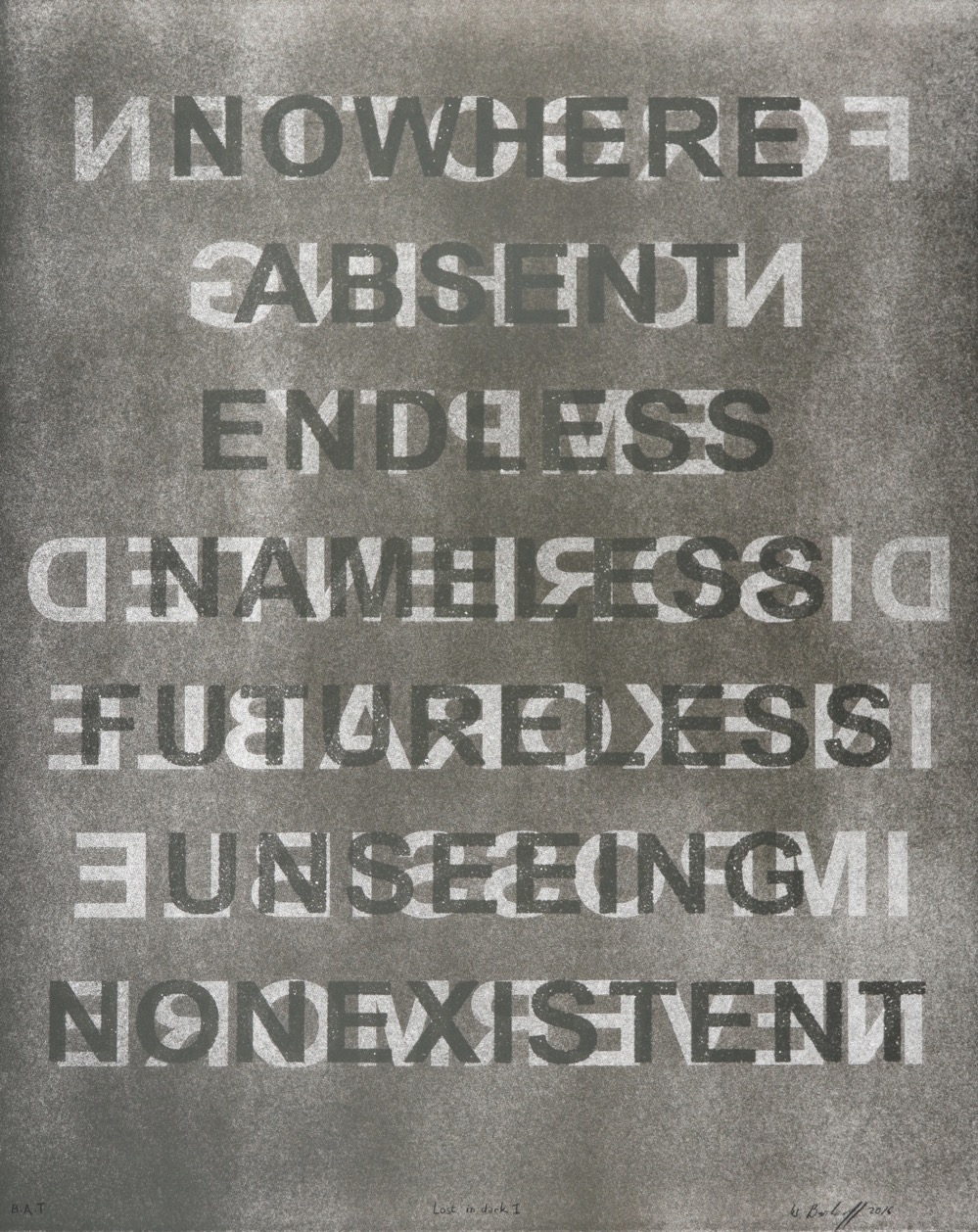
Title: Lost in dark I
Medium: Two colour lithograph and relief print
Paper size: 75 x 60 cm
Edition size: 25
Price: R 12 350 (excl.VAT)
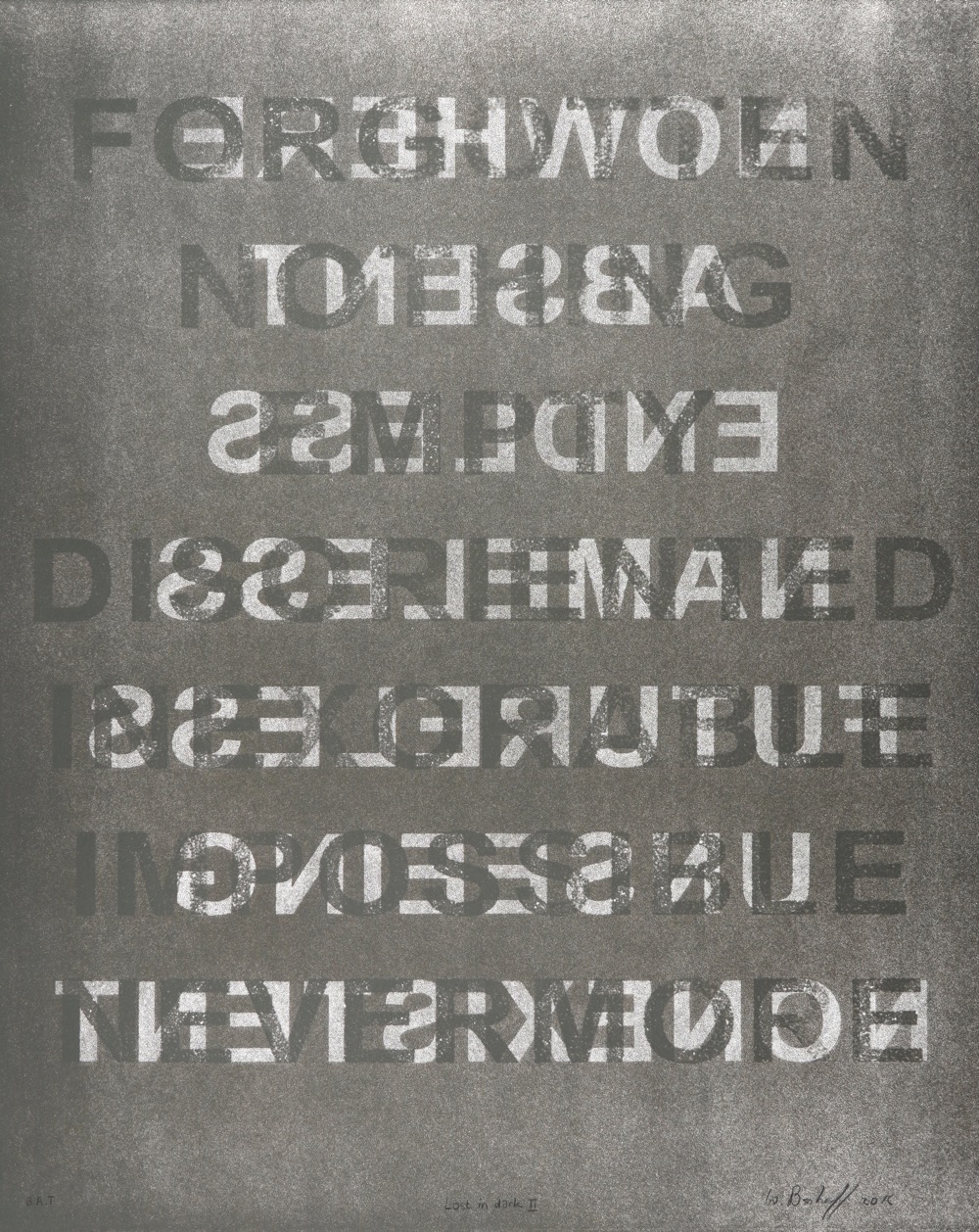
Title: Lost in dark II
Medium: Two colour lithograph and relief print
Paper size: 75 x 60 cm
Edition size: 25
Price: R 12 350 (excl.VAT)
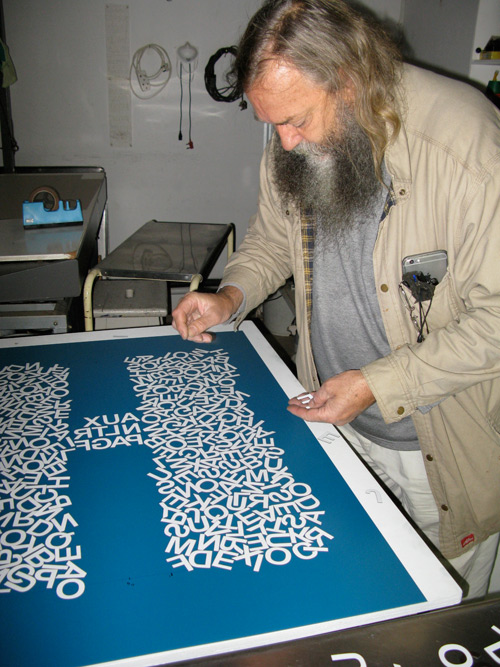
Willem Boshoff placing text onto printing plate.
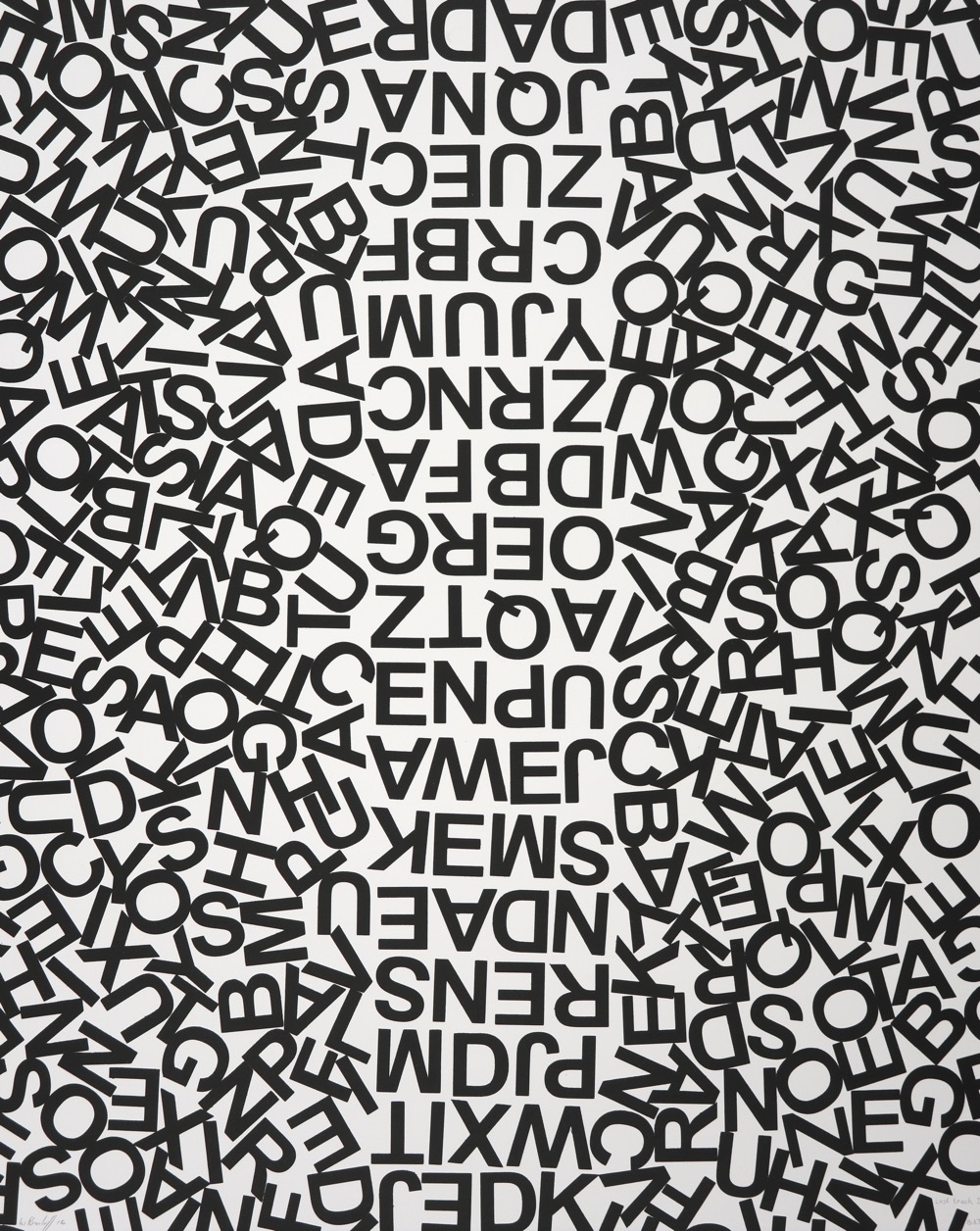
Title: Lost track I
Medium: Single colour lithograph
Paper size: 75 x 60 cm
Edition size: 15
Price: R 12 350 (excl.VAT)
In “Lost track I and II” one sees the negative spaces and not the letters for what they are. The letters build up a texture, much like grains of sand that are then flattened and become “ordered” once a vehicle has moved over them. The prints read as a single track or foot path when viewed on their own. When viewed together they become a road. The letters were placed deliberately not to make up any words.
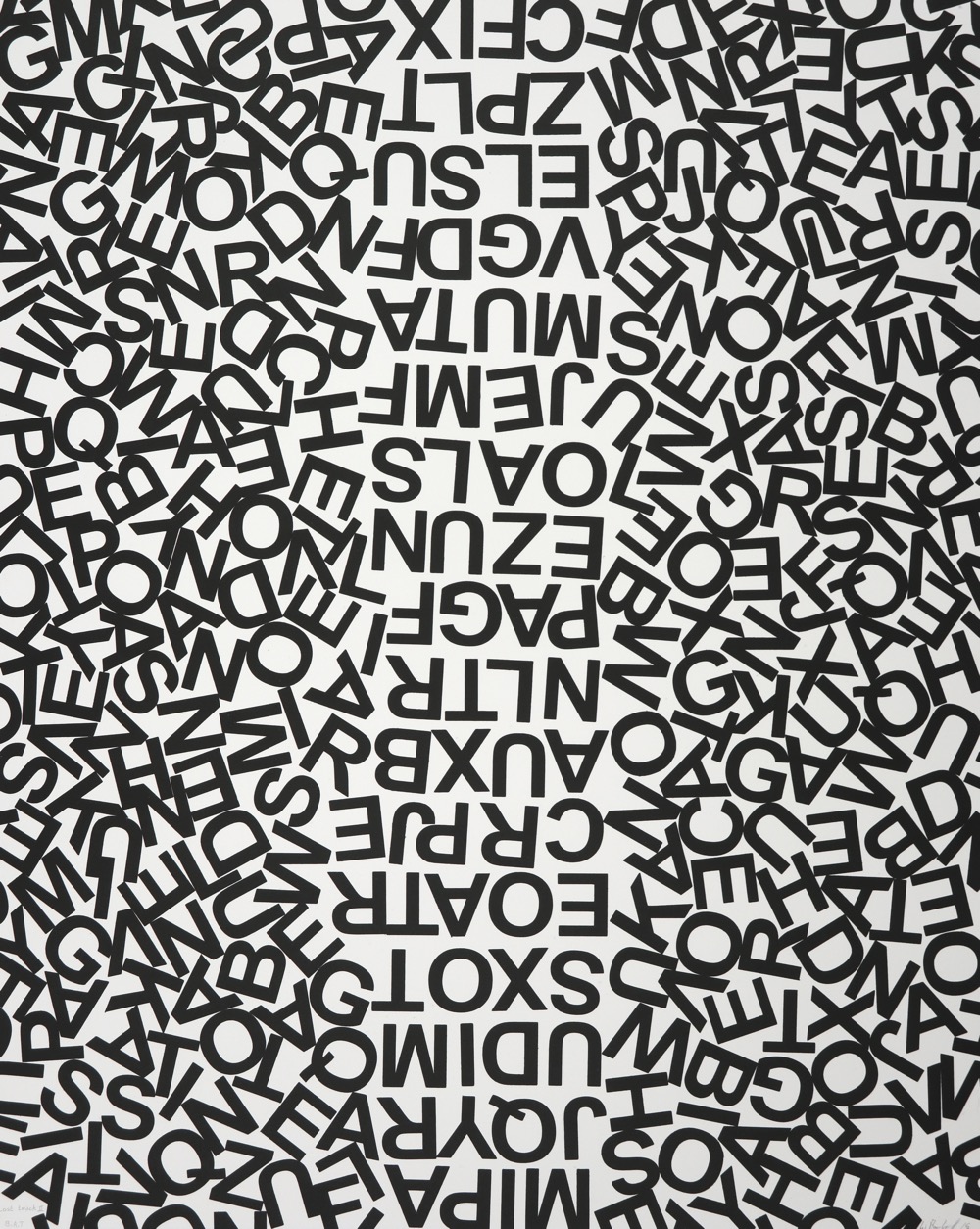
Title: Lost track II
Medium: Single colour lithograph
Paper size: 75 x 60 cm
Edition size: 15
Price: R 12 350 (excl.VAT)
Quixotic Upset
While working on this image, first by sketching the landscape in pencil and then by arranging bits of bent wire on top of the drawing, Boshoff’s cellphone fell out of his jacket pocket onto the wire “drawing’ and shifted the wire pieces. The accident was a happy one and he decided to leave the wire as it lay. The image was then transferred to a computer screen and text from the novel placed where the drawn lines of the landscape were as well as where the wire had fallen. A photopolymer plate was made from the computer generated image and the print was printed by letterpress. Much like Don Quixote who was able to see things in clearly in chaos.
The Ingenious Gentleman Don Quixote of La Mancha is a Spanish novel by Miguel de Cervantes Saavedra. Published in two volumes, in 1605 and 1615, Don Quixote is considered the most influential work of literature from the Spanish Golden Age and the entire Spanish literary canon.
The novel's farcical elements make use of punning and similar verbal playfulness.
The
novel is considered a satire of orthodoxy, veracity and
even nationalism. In exploring the individualism of his characters, Cervantes
helped move beyond the narrow literary conventions of the chivalric romance
literature that he spoofed, which consists of
straightforward retelling of a series of acts that redound to the knightly virtues of the
hero. The character of Don Quixote became so well known in its time that the
word quixotic was quickly
adopted by many languages.
Text on Don Quixote taken from: https://en.wikipedia.org/wiki/Don_Quixote
Quixotic definition: foolishly impractical especially in the pursuit of ideals; especially : marked by lofty romantic ideas or extravagantly chivalrous action.
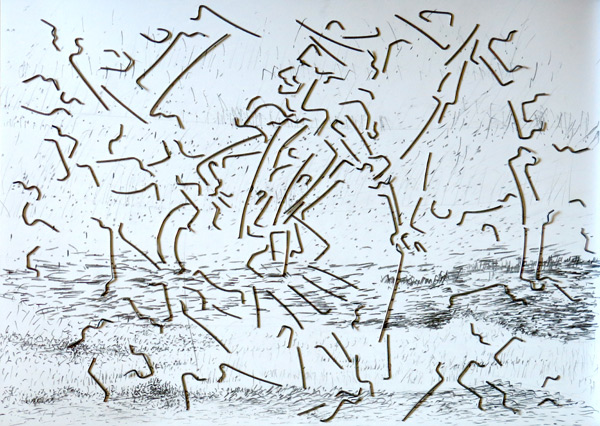
The pencil drawn landscape with the wire figure placed on top, before the cellphone fell onto it.
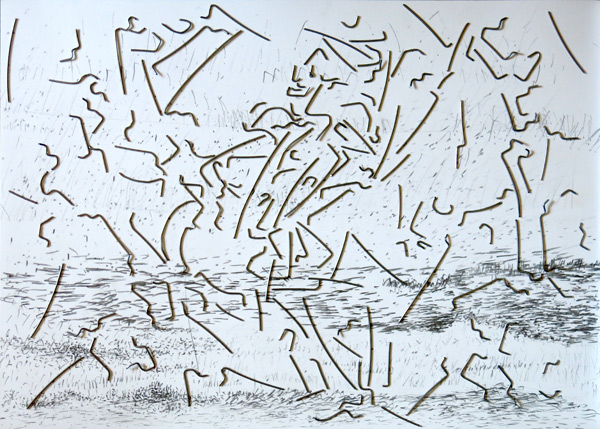
After the cell phone fell.
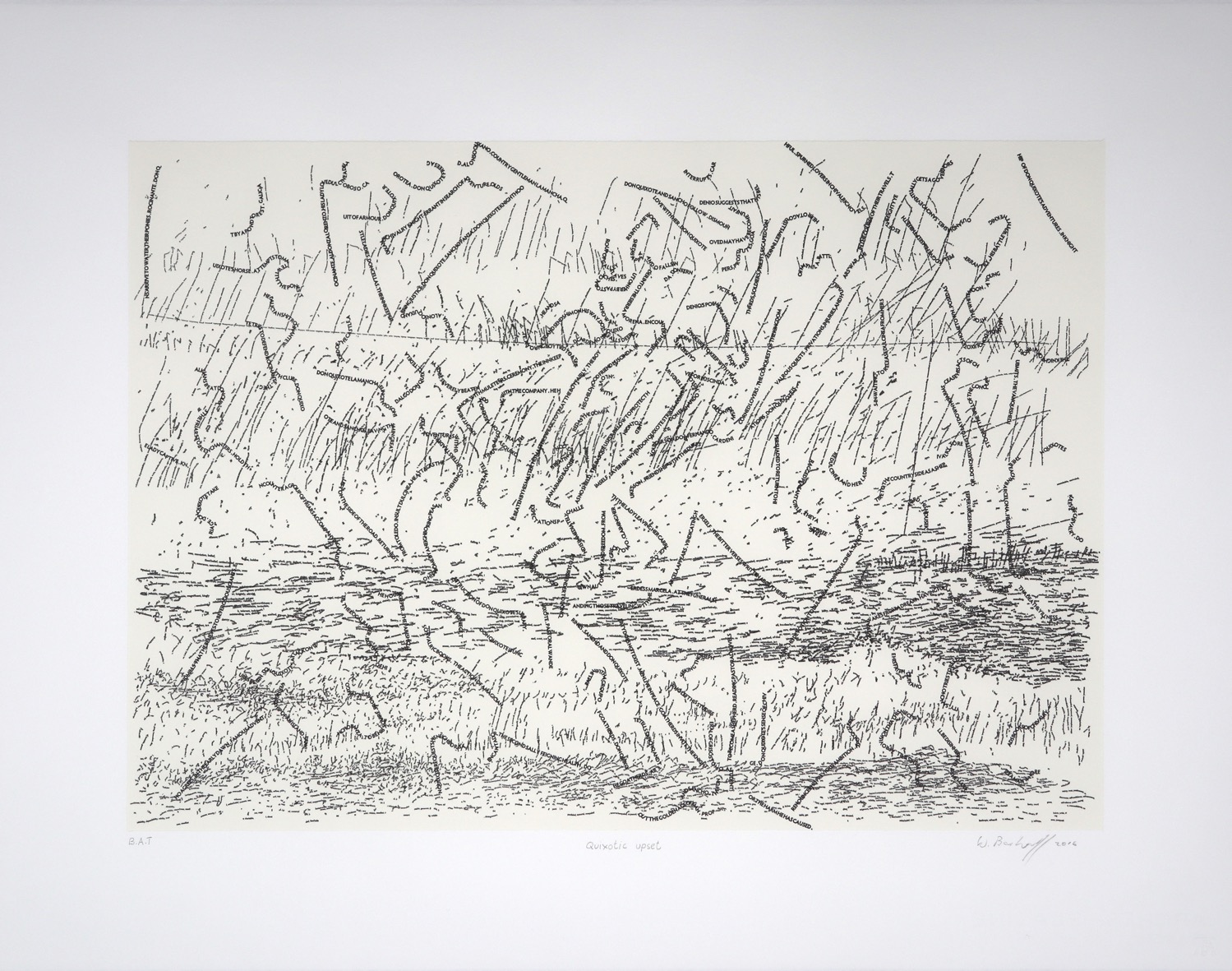
Title: Quixotic upset
Medium: Chine collé/letterpress
Paper size: 57.5 x 72.5 cm
Image size: 40.4 x 57 cm
Edition size: 25
Price: R 12 000 (excl.VAT)
The Oh No! Prints
For close-up detailed images of the prints please go to the bottom of the page.
Boshoff has a remarkable ability to weave simple things into
complex threads (like the beautiful installation outside the main
entrance to the Mpumalanga Legislature which consists of jars of
soil collected from sites around the country, poignantly
reminiscent of healing, memory and belonging). And then he does
the reverse, taking a complicated Latin sounding word and making
it accessible, by turning it into a print. Here is what he wrote about
the print Culmiculous.
"I wanted to make something that has a feeling of straw,
chaff or grass. In my anthology 'Kykafrikaans' I had a
visual poem called 'Bol Strooi' (ball of straw) – written
because of the Afrikaans idiom: "Hy praat strooi," (he
speaks inconsequential rubbish).
I found some fine bits of straw and turned them into the
Oh No! print. Then I checked all my notes on grass and
straw in the Oh No! Dictionary, but there was nothing I
could use as a title. The title I chose, culmiculous, is not
included the Oh No! Dictionary, but I noted that it rhymes
with 'ridiculous' and I put it in as the title of the print.
The entry culmiculous is in fact from my new dictionary
What every Druid Should Know. The entry reads:
Culmicolous: Living in straw or on the stems of grass,
as certain fungi do – from the Latin culm 'stalk' and colere
'to inhabit'.
Words like culmiculous and nidicolous (living in a nest)
are pronounced close to ridiculous. A culm is the stem of
a plant, especially a jointed grass stalk and a culmiferous
plant grows stalks. Culm is also soot and mud."
Willem Boshoff, 2010
The "imagery" on these prints is constructed out of words that
relate to the dictionary that the title of the print is from. Dromomania
was drawn whilst listening to rugby on the radio, wherever the ball
went Boshoff drew a line along which text was later imposed.
Willem Boshoff has decided that he is a Druid. A while ago he realised
that all the things that interested him, the things he collects and the
way he lives is druidic. His take on Druid is not the new age
Stonehenge version. His is more local, an African outsider who
collects, ponders, creates and occasionally comments.
Most of the prints in this series relate to The Oh No! Dictionary that Boshoff has compiled.
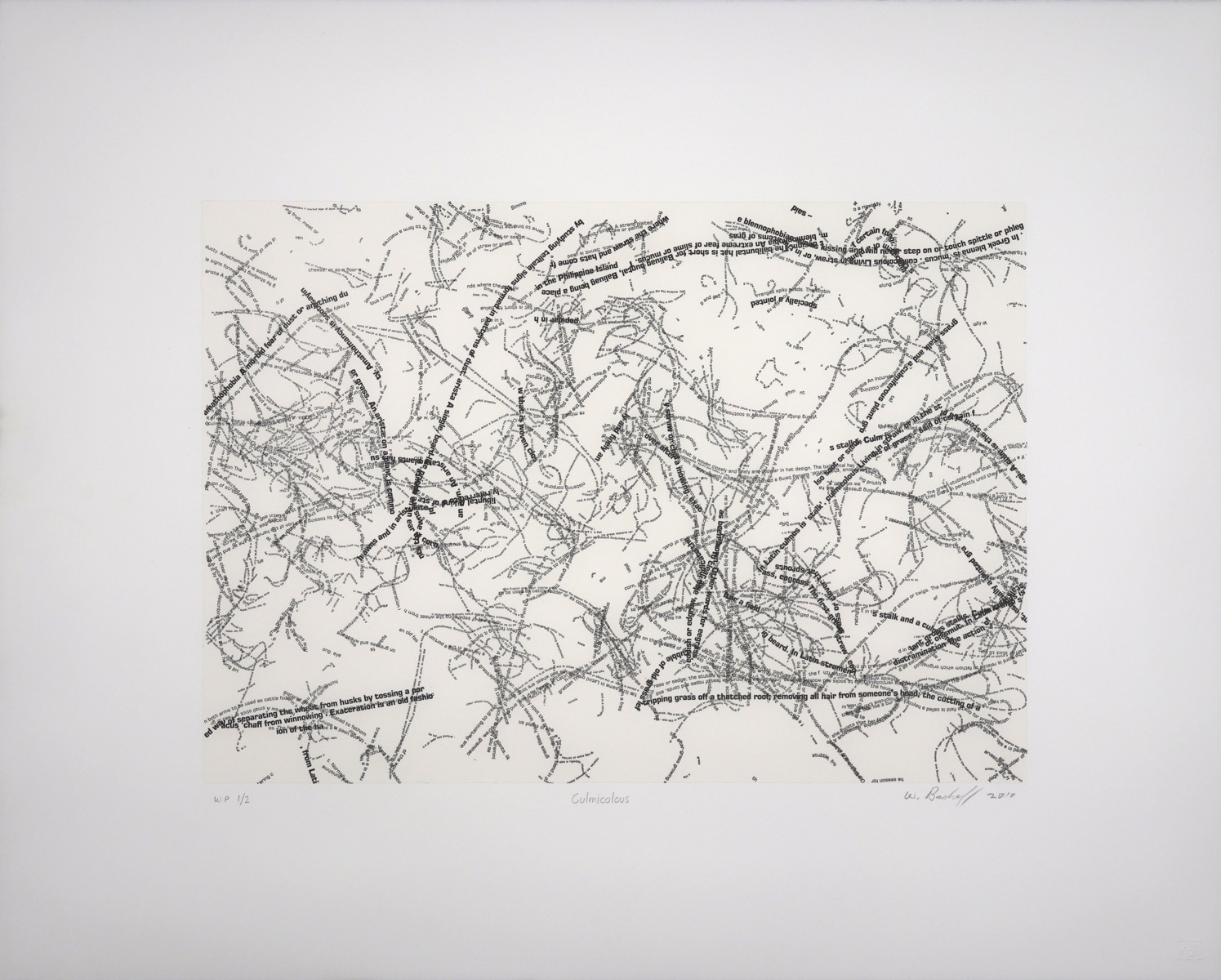
Title: Culmicolous
Definition: Living in straw or on the stems of grass,
as certain fungi do – from the Latin culm 'stalk' and colere
'to inhabit'.
Medium: Chine collé/letterpress
Paper size: 50.5 x 62.8 cm
Image size: 29.7 x 42 cm
Edition size: 35
Price: R 11 450 (excl.VAT)
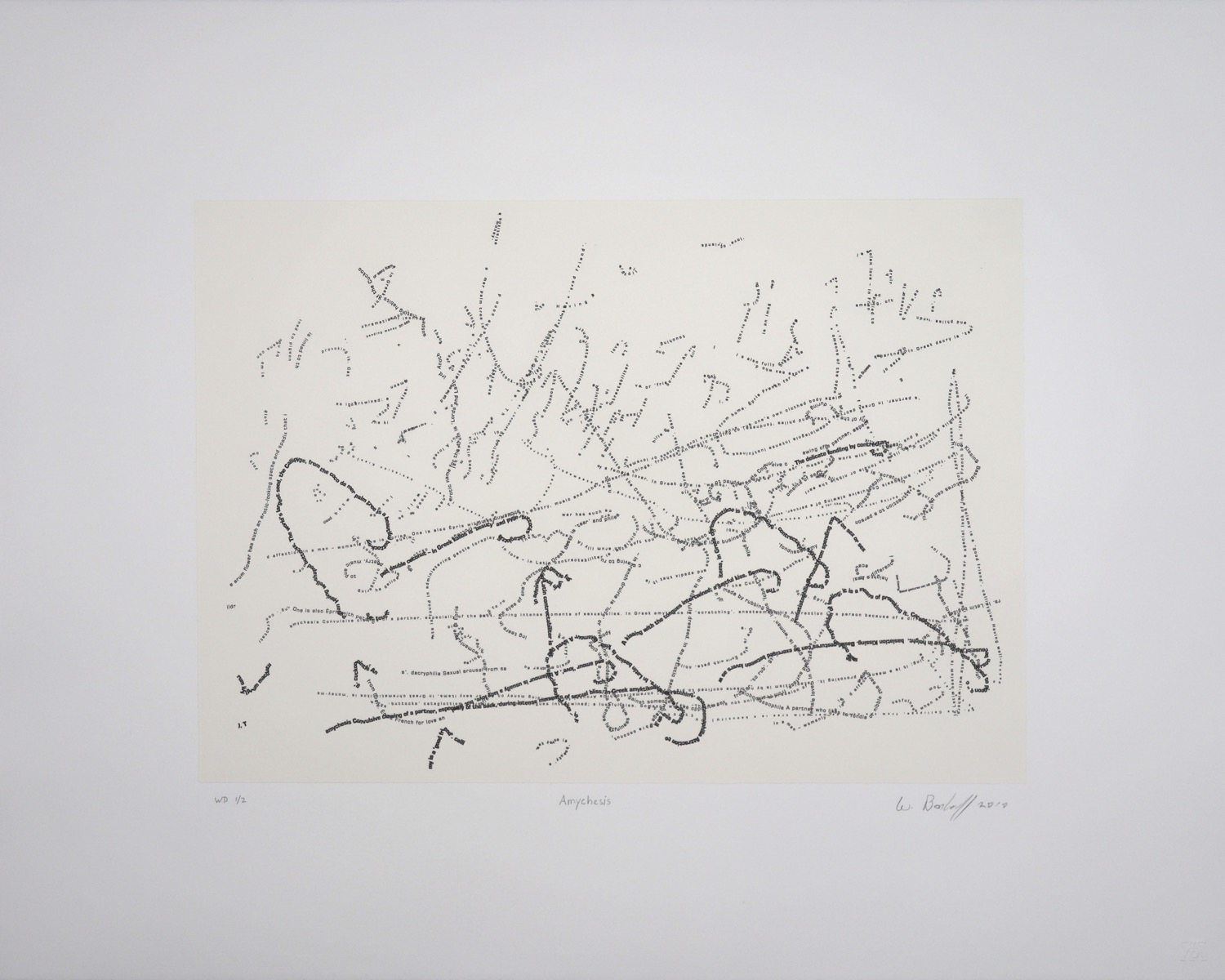
Title: Amychesis
Definition: Convulsive clawing of a partner, especially of the back, during intense moments of sexual bliss. In Greek amyktikos is ‘scratching’.
Medium: Chine collé/letterpress
Paper size: 50.5 x 62.8 cm
Image size: 29.7 x 42 cm
Edition size: 35
Price: R 11 450 (excl.VAT)
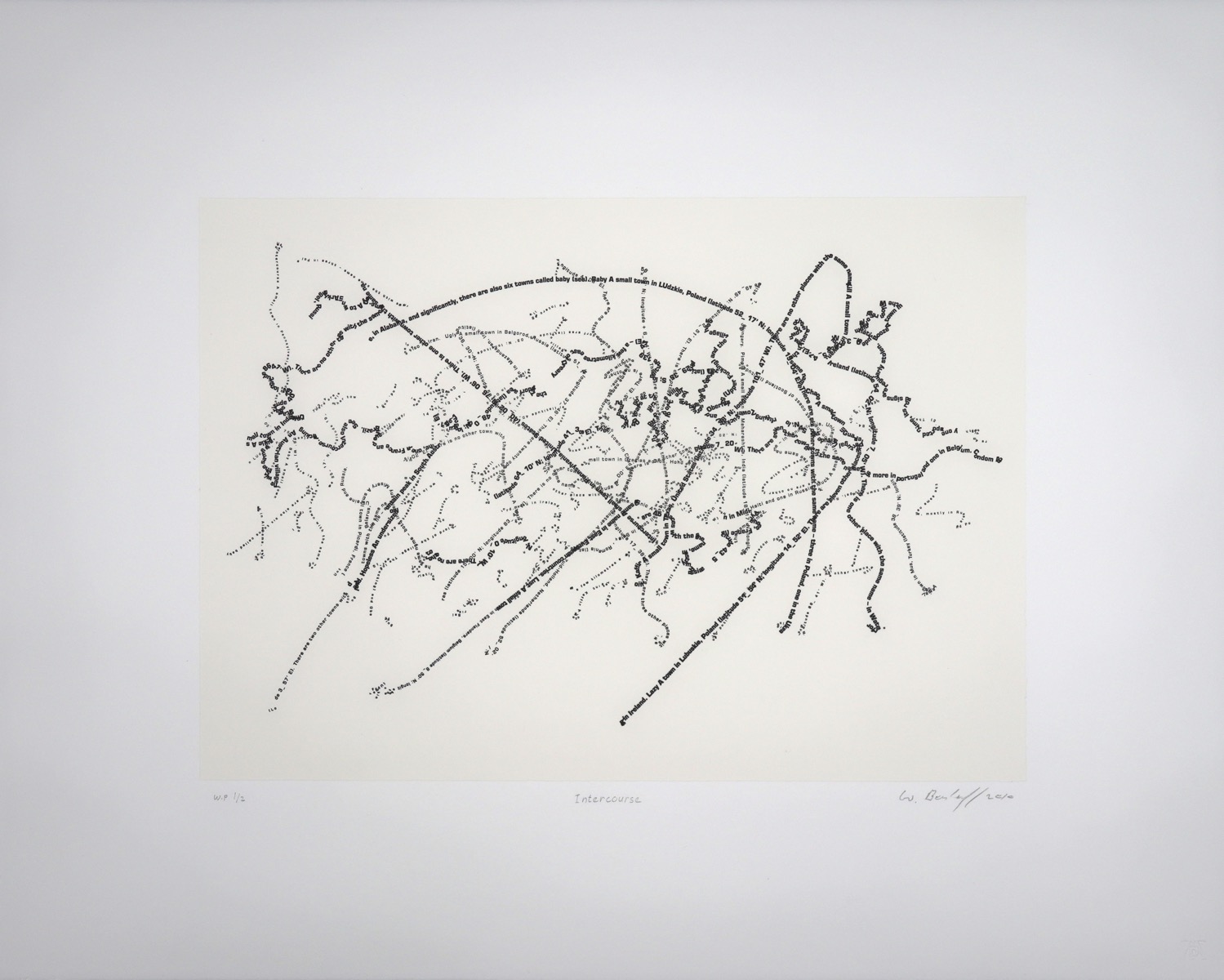
Title: Intercourse
Definition: A small town in Pennsylvania, United States (40º 02’ N; 76º 06’ W). There is one other town with the same name, in Alabama, and significantly, there are also six towns called baby.
Medium: Chine collé/letterpress
Paper size: 50.5 x 62.8 cm
Image size: 29.7 x 42 cm
Edition size: 35
Price: R 11 450 (excl.VAT)
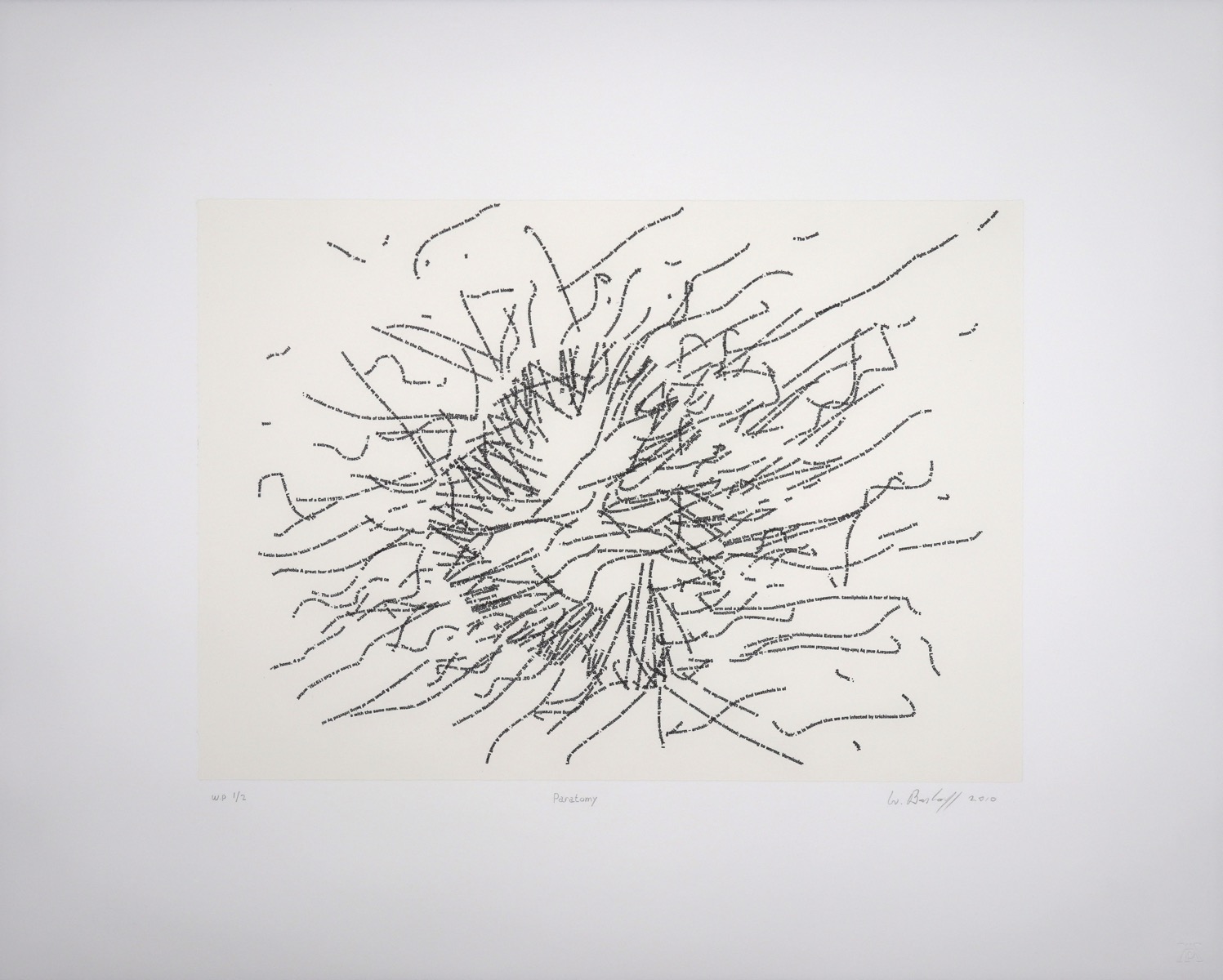
Title: Paratomy
Definition: In worms, a way of multiplying, based on the tendency of the worm to divide into parts, each of which grows its own head. If the heads grow on before the parts break off, the process is called architomy. In Greek tomos is ‘cutting’.
Medium: Chine collé/letterpress
Paper size: 50.5 x 62.8 cm
Image size: 29.7 x 42 cm
Edition size: 35
Price: R 11 450 (excl.VAT)
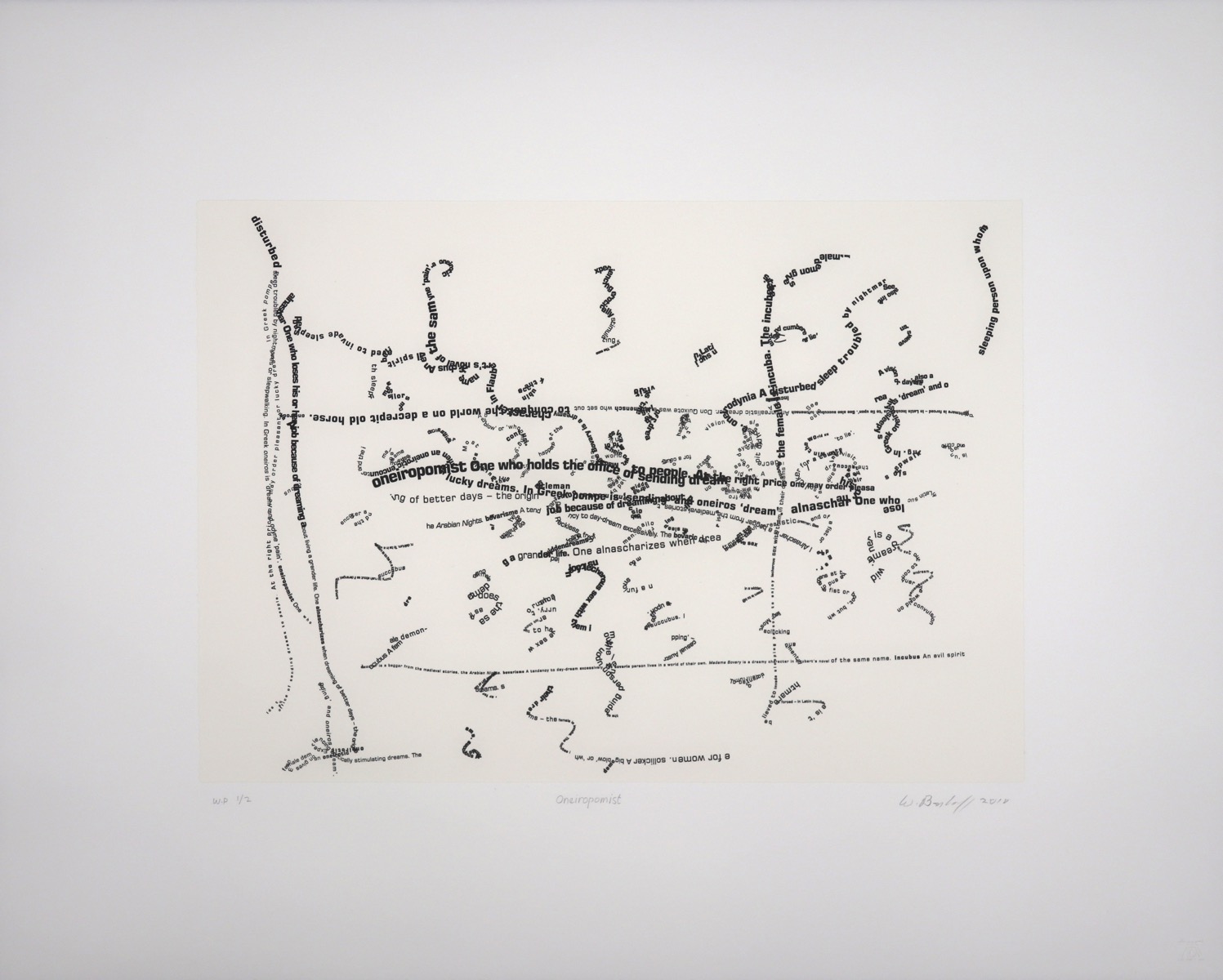
Title: Oneiropomist
Definition: One who holds the office of sending dreams to people. At the right price one may order pleasant or lucky dreams. In Greek pompe is ‘sending’ and oneiros ‘dream’.
Medium: Chine collé/letterpress
Paper size: 50.5 x 62.8 cm
Image size: 29.7 x 42 cm
Edition size: 35
Price: R 11 450 (excl.VAT)

Title: Dromomania
Definition: A craving to run, roam or travel around. The jogging craze is undoubtedly supported by free-spirited dromomaniacs. Dromophobia is a fear of motion as sensed in moving vehicles. In Greek dromas is ‘runner’.
Medium: Chine collé/letterpress
Paper size: 50.5 x 62.8 cm
Image size: 29.7 x 42 cm
Edition size: 35
SOLD OUT
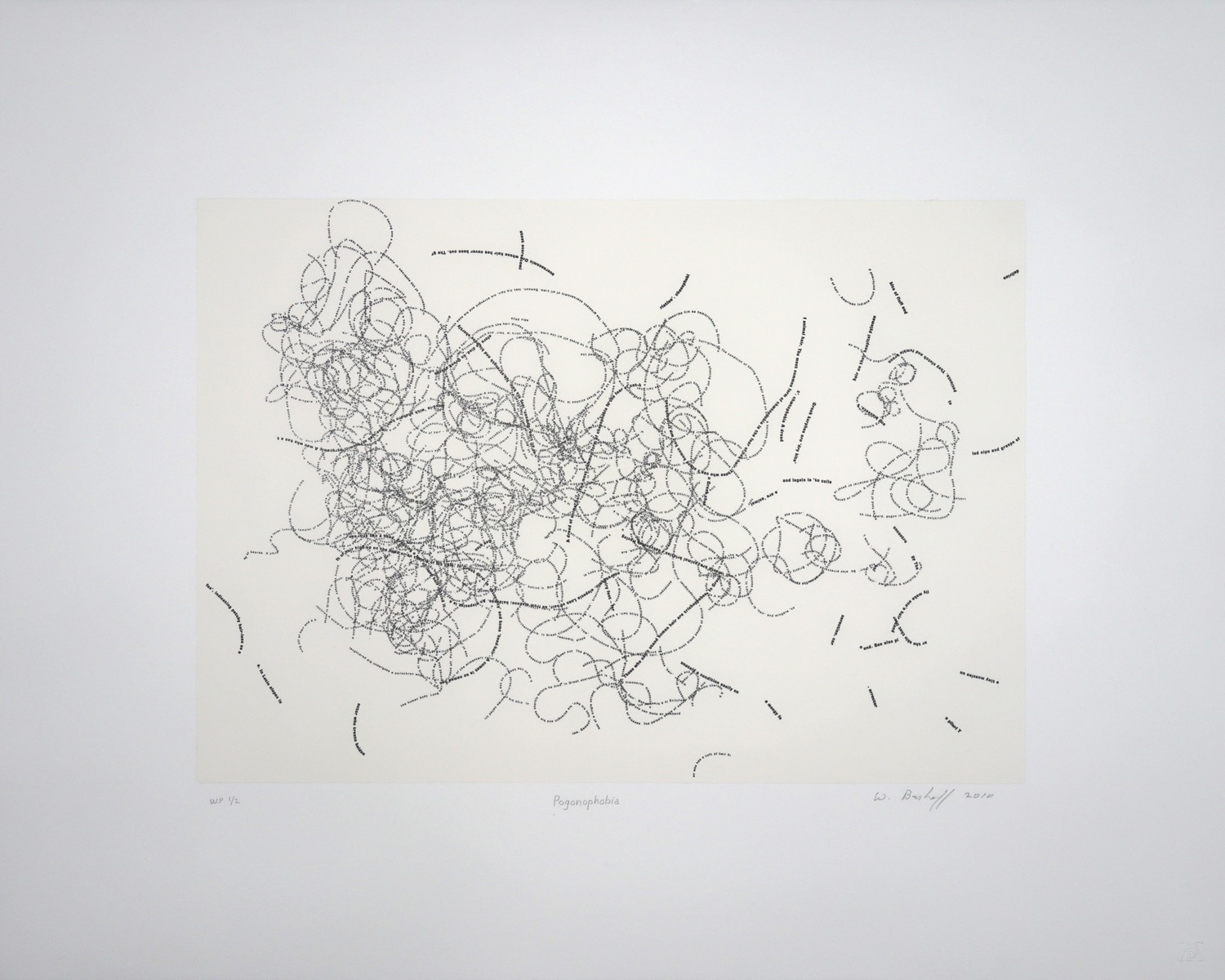
Title: Pogonophobia
Definition: A dread of beards. A philopogon is a lover (usually female) of beards, or a man so fond of his own beard, he never shaves it – in Greek pogon is ‘beard’.
Medium: Chine collé/letterpress
Paper size: 50.5 x 62.8 cm
Image size: 29.7 x 42 cm
Edition size: 35
Price: R 11 450 (excl.VAT)
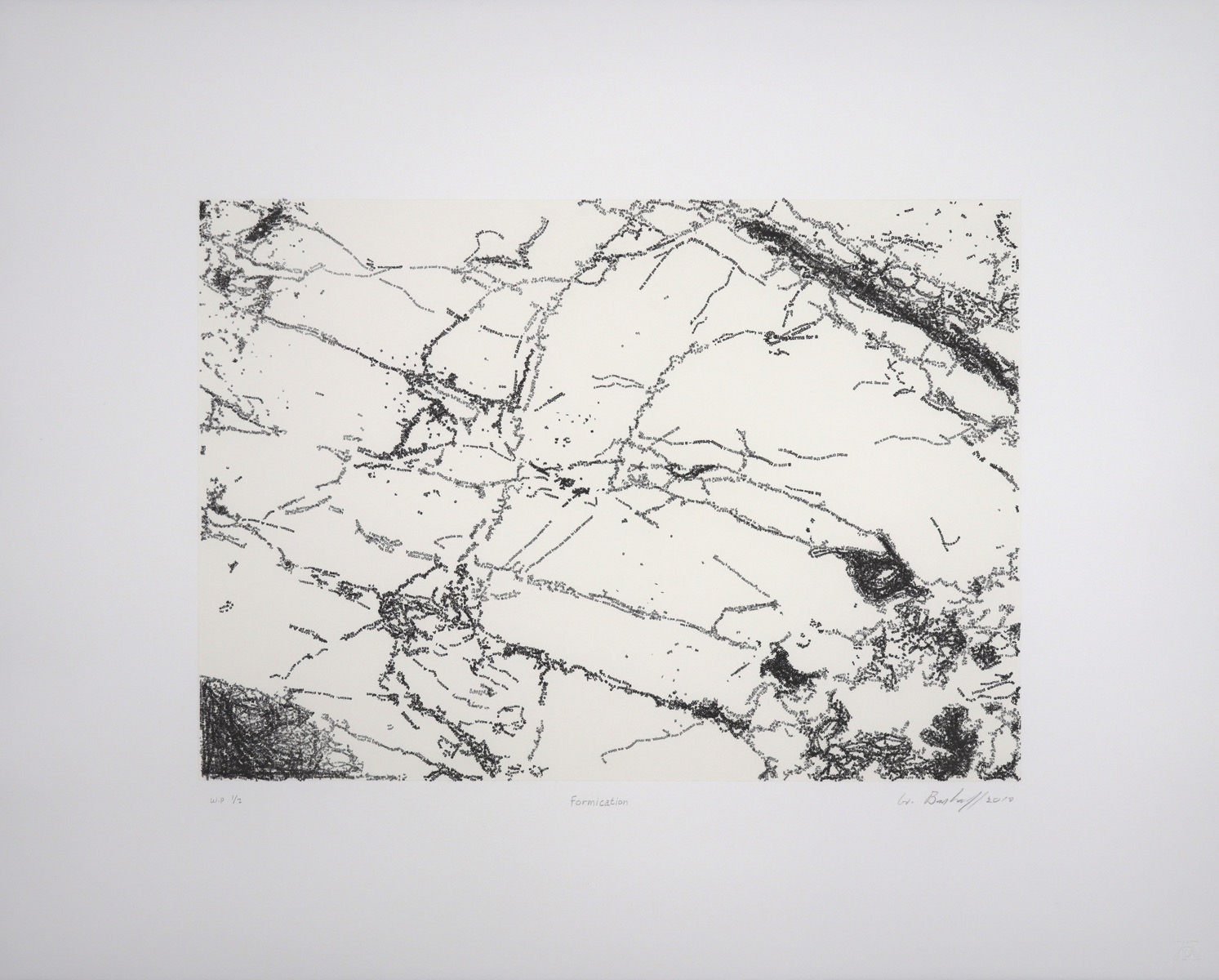
Title: Formication
Definition: A creepy sensation as if ants are crawling on one’s skin. In Latin formica is ‘ant’.
Medium: Chine collé/letterpress
Paper size: 50.5 x 62.8 cm
Image size: 29.7 x 42 cm
Edition size: 35
SOLD OUT
Close-up view of prints to show detail
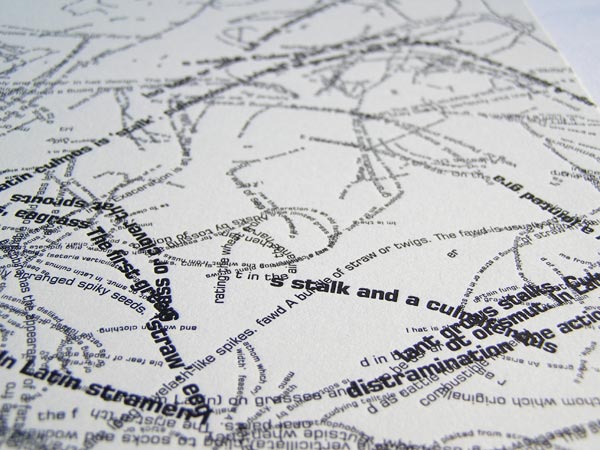
Culmiculous (detail)
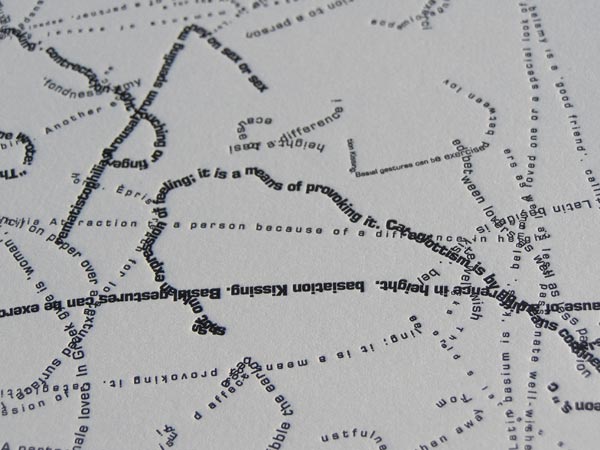
Amychesis (detail)
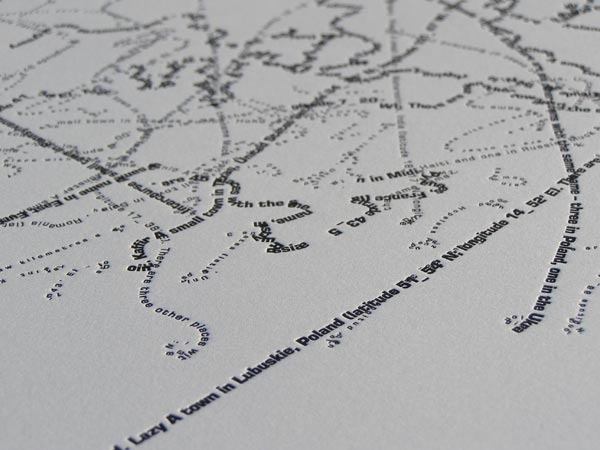
Intercourse (detail)
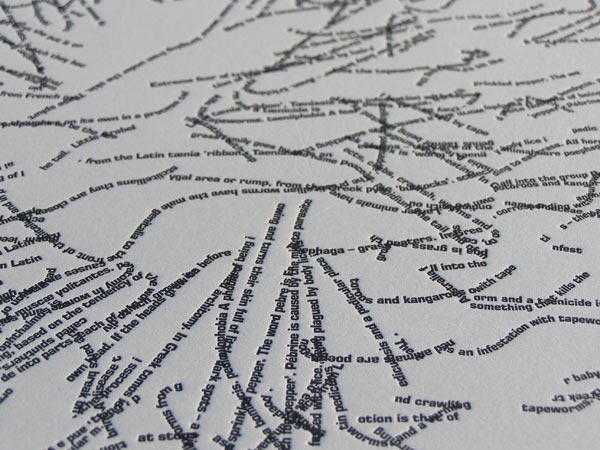
Paratomy (detail)
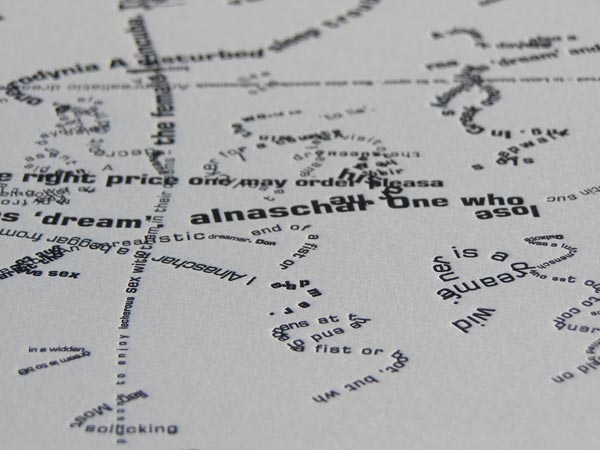
Oneiropomist (detail)
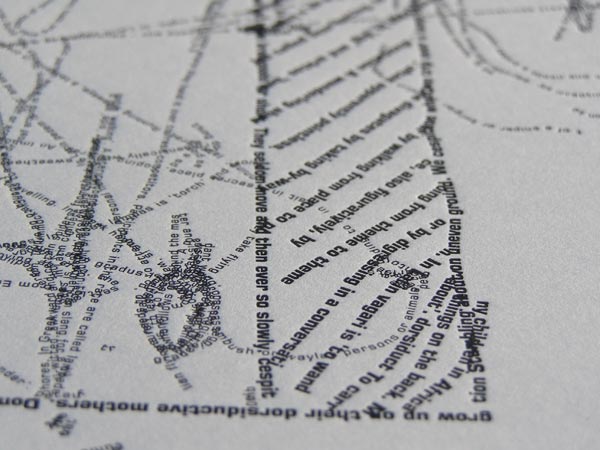
Dromomania (detail)
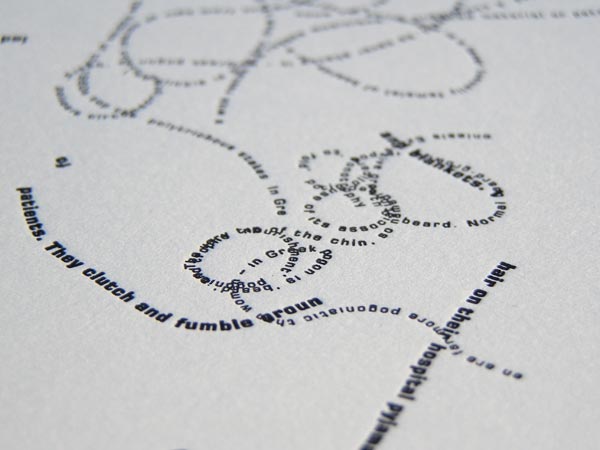
Pogonophobia (detail)
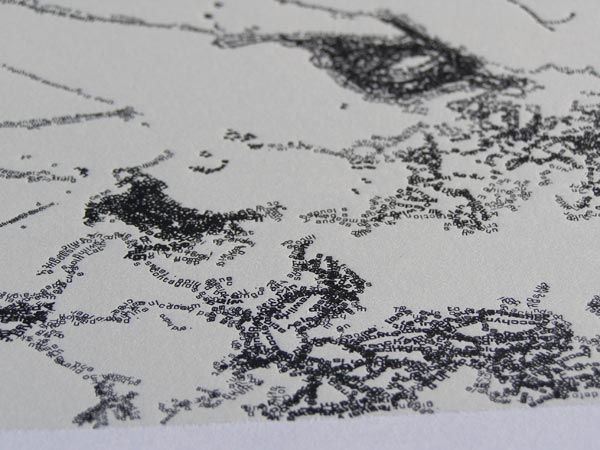
Formication (detail)
OH NO! WORDS
"I have often wondered why some authors apologise for using difficult and
forgotten
words. To me, the experience of the languages I speak is like travelling
through the
landscape I grew up in, the landscape I love and know so well. The trees
and plants
are mostly familiar to me, but every now and then I spot a rare and
curious species. It usually makes me stop dead in my tracks and makes me
reach for my camera and
identification manuals. When I read a text and I see a word that I have
not yet
encountered, I get thoroughly excited. I believe that there are those
who get really
annoyed.
I wrote my first dictionary in 1977 – DICTIONARY OF COLOUR. Since
then I have
written quite a number of them. The biggest one, with over 18,000
entries, was
completed in 1999 – A DICTIONARY OF PERPLEXING ENGLISH. In order to
compile this dictionary I spent nearly four years, carefully reading
page for page the
seventeen volumes of the proper OXFORD ENGLISH DICTIONARY. I made
careful
notes on all the words I usually found puzzling and obscure and turned
them into
dictionary entries. I tried to give each word a 'face' so that it might
become endearing and desirable. I gave its meaning/s, wrote a little of
its etymology, related anecdotes and gave examples of its usage. I have
often worked with the extinction of plants and trees in my artworks and
in a way I am trying to save old and difficult words from vanishing.
I have not yet published my dictionaries as books. Instead I turn
them into artworks,
shown at exhibitions. In a way, exhibiting artworks is 'publishing' them
or making
them public. In my BLIND ALPHABET PROJECT, for example, I have created a
dictionary for blind people to walk around in. The 'pages' are really
metal bases with
knee-high wire-mesh boxes concealing wooden sculptures that cannot be
seen by
sighted people. Blind people find the boxes or 'pages' conveniently
accessible in
rows, next to each other and do not have to look for them. The sighted
are made to
feel somewhat blind by the frustrating gallery signs that say "Don't
touch." The
Braille plates on the boxes discuss strange words for shapes, structures
and textures – a dictionary of morphology. To date I have made close to
400 of these three-dimensional 'pages'. The Letter 'A' forms chapter
one. Chapters two and three
comprise the letter 'B' and can be seen in different locations. Nine
'chapters' of THE
BLIND ALPHABET 'dictionary' have been completed and can be viewed in
different
countries and cities.
The OH NO! DICTIONARY is a collection of strange words from some of my existing
dictionaries, namely :
DICTIONARY OF PERPLEXING ENGLISH
BEYOND THE EPIGLOTTIS
DICTIONARY OF -OLOGIES AND –ISMS
VISUUM AND TUTAMINA OCULI
DICTIONARY OF MANIAS AND PHOBIAS
OH NO! DICTIONARY OF ITCHY CUM SCRATCHY
OH NO! DICTIONARY OF RED NAMES
OH NO! DICTIONARY OF UNMENTIONABILIA
OH NO! DICTIONARY OF PLACES MOTHER MIGHT NOT APPROVE OF.
The OH NO! in the title plays on my fascination with words and names that create an
incredulous or surprising reaction. One might be taken aback when hearing a really
shocking place name like 'Fucking', a town in Austria or 'Shit', a small town in
Afghanistan. The involuntary reaction would be to say "Oh No!"
To celebrate my OH NO! DICTIONARY, I made eight word 'drawings'
that were
'translated' into 'text' by my daughter Karen Boshoff. These are called
OH NO! WORDS and feast on the craziness of eight intriguing words that
exist in the OH NO! DICTIONARY."
Willem Boshoff, 2010
Follow Willem Boshoff on Instagram
Follow Willem Boshoff on Facebook
